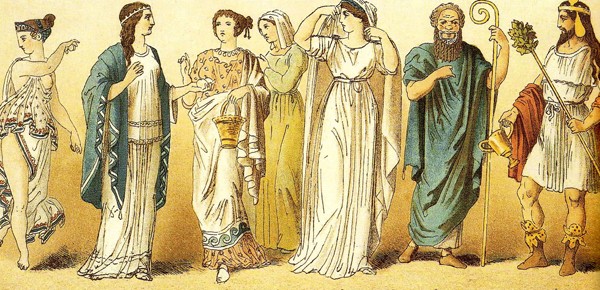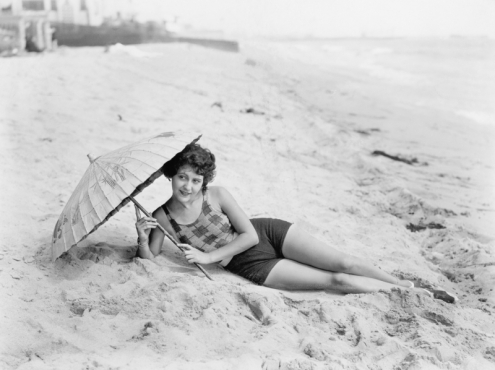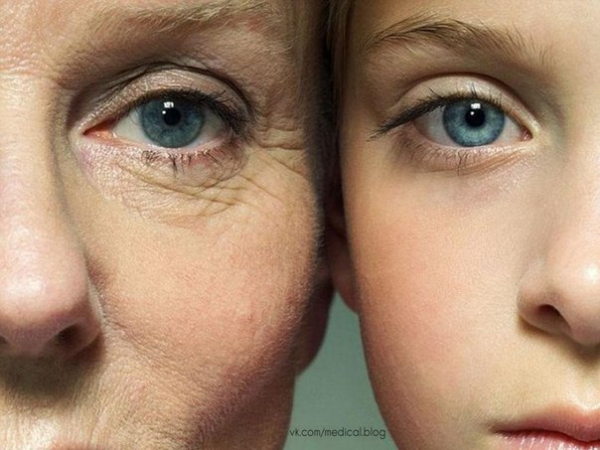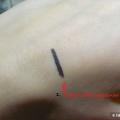Why do we love to sunbathe? The history of tanning fashion
Two thousand years ago, the Roman poet Ovid, in the Science of Love, a famous poem dedicated to the art of seduction, gave advice to novice lovers:
Just be neat and simple.
Sunburned on the Champ de Mars
Fit the body.
The medicine of antiquity is familiar with the healing power of the Sun - the famous Hippocrates repeatedly mentioned the healing effect of sunlight, the doctors of Ancient Egypt and Assyria knew about it, and the participants of the Olympic Games were recommended to take sun baths to achieve the best results.
In ancient Greece, a harmonious and proportional male body was considered the standard of beauty.
It befits a man, preparing for military service, to diligently play sports. And tanning, as a natural result of hard work in the fresh air, has become an integral part of the perfect male body.
White skin abhorrent in a sailor - under the spray of the sea
A dark tan lays on the burned face
White skin - a reproach to the tiller when he is in the arable land
The ploughshare also leads the blade, putting its shoulder to the sun.
And for you, who longs for a wreath of Pallas leaves,
For a contester of games, the white body is a shame.
Legend has it that before the battle of Marathon, the Greek commanders, in order to raise the morale of their soldiers, stripped several captured Persians and released them in front of the line. The pale bodies of the Persians made the Greeks laugh contemptuously.

But with women, everything was exactly the opposite. Going out into the streets, the inhabitants of Athens of those times wrapped themselves in himation and put on a straw hat. On hot days, umbrellas were used to protect the skin from the sun - a woman's tan was not honored: a woman watching over the hearth should (unlike slaves) be away from the sun's rays. It is not for nothing that the art of that time is characterized by the image of the male body with brown paint, which conveys a dark tan, and the female one - light.
The exception was the tanned Spartans - as Plutarch writes, the laws of Lycurgus “strengthened and tempered the girls with exercises in running, wrestling, discus and javelin throwing, so that women, giving birth, could simply and easily cope with torment.” From participation in nude competitions, solemn processions and ceremonies on a par with young men, the skin of the inhabitants of Sparta quickly acquired a bronze tint.
From ancient Greece, the fashion for tanning, along with the cult of a healthy, beautiful body, passed to the Romans. Tan became the distinction of a Roman citizen - a warrior and protector. Not without reason, meeting the young Octavian Augustus, the future emperor, who returned from a military campaign, his mother affectionately tells him: "how did you get tanned, a real Roman soldier." Here is what Ovid writes about male beauty:
Who is beautiful by nature, let it flaunt beauty,
Who has a noble tan - know how to show your shoulders
And Roman women should be pale. Lucius Apuleius said that Vulcan would not marry Venus, and Mars would not love her if she were dark. To lighten the skin, Roman aristocrats used poisonous lead whitewash, which sent more than one fashionista to the kingdom of Pluto.
But times have changed and, as the empire moves towards the decline, fair skin becomes a sign of high social status. With the decline in the prestige of professions that require outdoor activities, the prestige of tanning decreases. Previously, being a sailor or a farmer was not considered shameful, but other times are coming.
Military service is no longer considered an honorable military service; to protect against barbarians, the Romans prefer not to fight themselves, but to hire other barbarians. Surely tanning returned to men's fashion with the coming to power of the next "soldier emperor", but not for long.
In imitation of the aristocracy, pallor for centuries (almost two thousand years!) Becomes an attribute of female and male beauty and a sign of belonging to high society. Sunburn remains the lot of peasants, sailors, ordinary soldiers - in a word, the lower strata of the then population.
- For their appearance, d "Epernon, is not very attractive.
Sire, I know that they were somewhat emaciated, and even sunburned in the sun of our southern provinces.
But I was just as thin and swarthy: they will grow fat and white, like me.
In the time of Isabella of Castile, those who were guilty before the royal couple were forced to sunbathe so that they could not appear at court for a long time, and in the seventeenth century, to avoid unwanted tanning, women of fashion came out with a mask on their face, which they held with their teeth. Queen Elizabeth the First of England powdered her face so thickly that no skin was visible. Dumas, describing at first a poor, but certainly positive heroine, emphasized that although "her hands, naked to the elbow, are covered with a tan", but "as if copied from the hands of Venus."
The attitude towards tanning changed with the onset of the twentieth century, when most of the low-paying jobs in industrialized countries moved under the roofs of factories, plants and offices. The tan changed its sign - a tanned body began to mean that its owner has money and free time.
 It is believed that the fashion for tanning was reintroduced by Coco Chanel in the 1920s.
It is believed that the fashion for tanning was reintroduced by Coco Chanel in the 1920s.
According to legend, she accidentally sunburned during a sea voyage in the Mediterranean Sea, she, not at a loss, declared that aspirin-colored skin was painful and ugly.
For several years, tanning has become an integral part of romantic heroes, and since the 30s - and heroines.
By the way, in the former slave states of the United States and the southern colonies of the British Empire, the fashion for tanning was instilled with great difficulty - the lower classes were still the darkest-skinned there.
Tanning acquires special prestige in northern latitudes. Tanning is becoming an erotic sign - in some countries people with dark skin are considered to be sexier.
In addition, dark skin is perceived as a sign of a healthy person who spends time playing sports in the fresh air. The tanning industry is emerging - seaside resorts, beaches, solariums, special cosmetics, and for the unhappy owners of the first skin type - self-tanning products.
Soon, the capricious fashion made a 180-degree turn, and the ladies, who had never left the house without wide-brimmed hats, long gloves and veils, went to the beaches, where at first timidly, and then more boldly, they exposed their bodies, exposing them to the hot rays of the sun.
According to another theory, the fashion for tanning appeared when pale skin became associated with hard work in closed premises of factories and plants, and tanning became the privilege of those who could afford to spend a lot of time outdoors, relaxing and playing sports.
Be that as it may, in almost all European countries and in America, tanning has become a symbol of health and an active lifestyle, and therefore many people, especially at a young age, basked in the scorching rays of the sun until they burned and dizzy, trying to get it.
In America, the generation that became so actively friends with the sun was the generation of people born during the post-war boom in the 40-50s. As the years passed, doctors began to notice that aging of the facial skin has its own characteristics - sharp wrinkles, unevenness , tuberosity of the skin, age spots, the presence of areas of compacted scaly skin and branches of dilated vessels on the cheeks.
Such changes are only found in areas that are exposed to increased sun exposure, while in areas usually protected from the sun (for example, in the lower abdomen, on the inner thighs, etc.), the skin tends to look much better. ...
It took thorough research before doctors came to a unanimous conclusion - not age, but solar radiation is responsible for the appearance of these signs. As it turned out, UV radiation, although not as destructive as ionizing radiation, nevertheless has enough energy to cause damage to DNA and other skin molecules.
 SIGNS OF PHOTO AGING:
SIGNS OF PHOTO AGING:
Wrinkles appearing in areas of collagen damage;
Rough skin that occurs in areas where atypical elastin accumulates (solar elastosis);
Now a number of means and methods have been developed that allow partially eliminating the signs of photoaging, you need to understand that in this case we are not talking about true rejuvenation, but about "treatment" (more precisely, restoration) of skin damaged by the sun.
 How to have the perfect date when you're not romantic
How to have the perfect date when you're not romantic What diseases do you need to drink coffee - benefits and effects
What diseases do you need to drink coffee - benefits and effects All my brown eyeliners
All my brown eyeliners